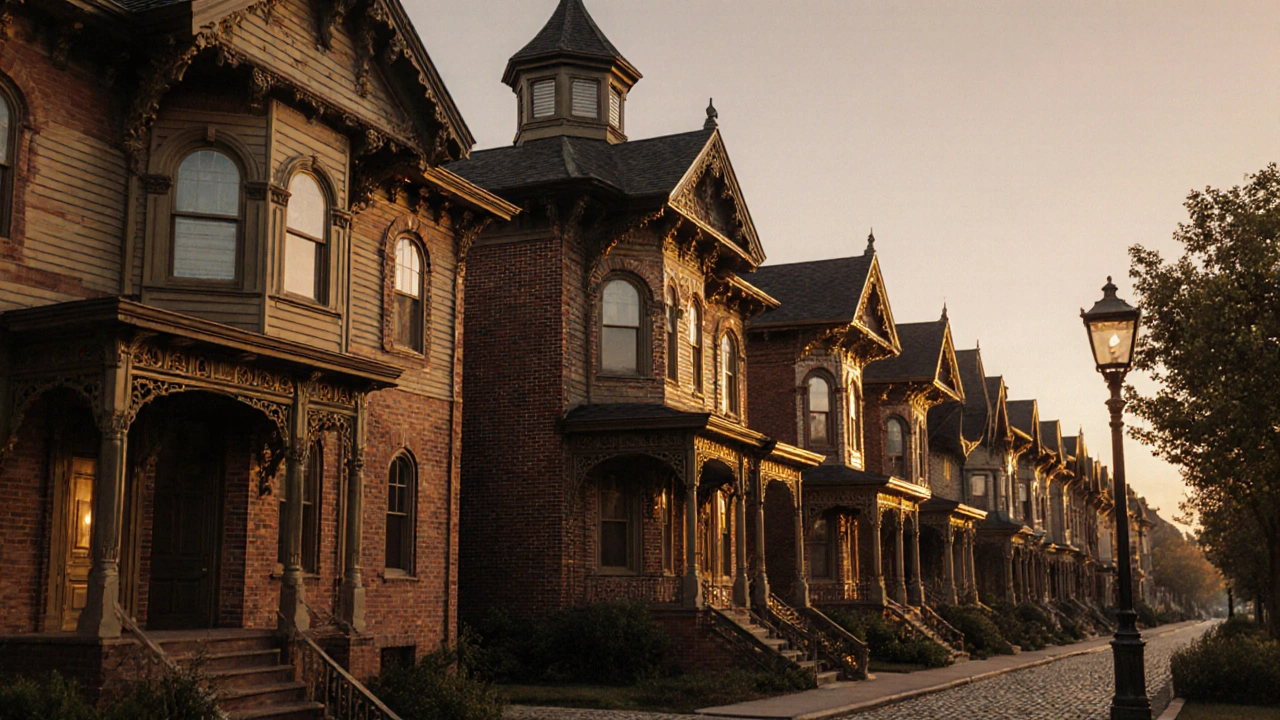Italianate architecture brought Tuscan villa charm to 19th-century homes with bracketed eaves, arched windows, and towers. Its influence still shapes modern design, from historic restorations to today’s farmhouse trends.
Italian Villa Style: Classic Design, Timeless Charm, and Real Homes
When you think of Italian villa style, a residential architectural style inspired by rural Italian farmhouses and Renaissance villas, often featuring terracotta roofs, stucco walls, and arched windows. Also known as Tuscan architecture, it brings the warmth of the Italian countryside to homes from California to Connecticut. This isn’t just about looks—it’s about how space feels. Open loggias, courtyards, and low-pitched roofs aren’t decorative afterthoughts; they’re designed for slow living, outdoor dining, and catching the afternoon sun.
This style doesn’t exist in a vacuum. It draws directly from Renaissance Revival, a 19th-century architectural movement that revived classical Italian forms like symmetry, columns, and proportion, and overlaps heavily with Italianate architecture, a Victorian-era style that borrowed Italian villa elements like tower-like structures and ornate brackets. You’ll see these influences in the posts below—how bracketed cornices echo Tuscan details, how asymmetrical facades mimic old farmsteads, and how courtyards became a modern obsession for indoor-outdoor flow. It’s not about copying old villas in Tuscany. It’s about using their DNA to build homes that feel lived-in, not staged.
What makes Italian villa style stick around? It works. The materials—stone, stucco, wrought iron—are durable. The layouts invite natural light and ventilation. The rhythm of arched doorways and windows creates visual calm. Unlike flashier styles, it doesn’t shout. It welcomes. You won’t find this style in high-rises or corporate towers. It thrives in single-family homes, country estates, and places where people want to breathe. The posts here show real examples: how to adapt the look for modern kitchens, how to blend it with contemporary landscaping, and why a simple clay tile roof still beats a metal one in heat retention.
Whether you’re restoring a 1920s villa or building from scratch, the lessons are practical: use local stone, keep overhangs wide, let the garden spill into the porch. This isn’t fantasy architecture. It’s smart, sun-tested design that’s been refined over centuries. Below, you’ll find guides that cut through the noise—no fluff, just what works.

